Lost and Abandoned: Forgotten Amusement Parks
Spreepark: Abandoned in Berlin
Very few places bring memories of joy and laughter more than a theme park. Whether you've snacked on cotton candy while visiting with some of your favorite Disney characters or you have memories of spending your summer vacation soaring upside down with friends on a roller coaster, you likely have fond memories of a theme park. While some theme parks continue to provide people of all ages with a variety of memories, the world is filled with some theme parks that have closed their gates and shut down their rides for the last time.
These once-thriving playgrounds now stand silent, nature reclaiming what was once a realm of excitement. Ferris wheels stand frozen against the sky, their stillness a stark contrast to the dynamic scenes they once framed. Carousel melodies have faded, replaced by the whispers of wind through rusting structures. Join us as we unravel the stories of these lost amusement parks, where the echoes of joy linger amidst the rust and decay.
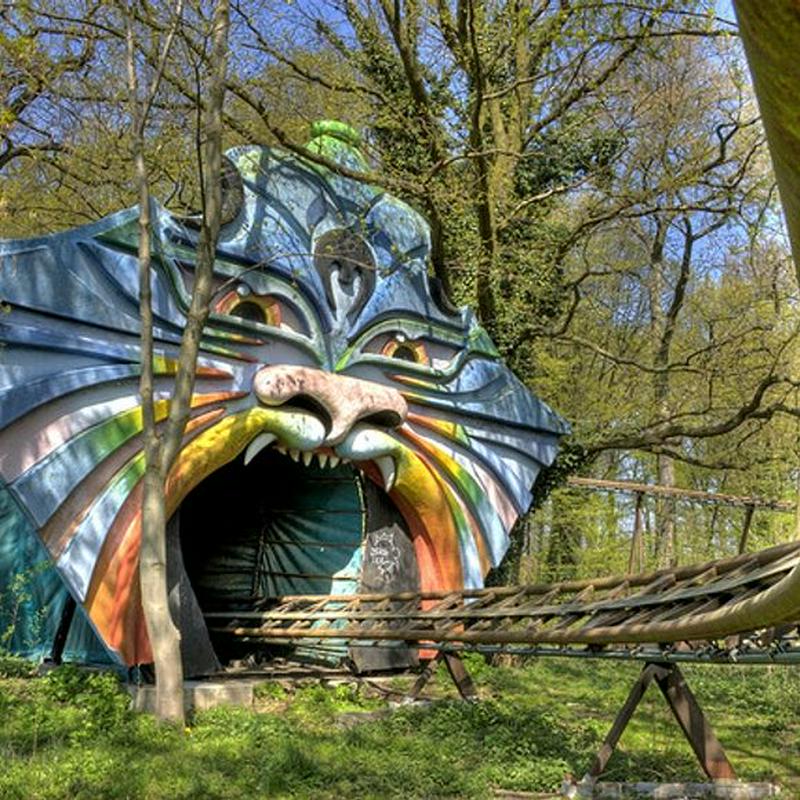
Developers put Spreepark on the banks of the River Spree in Berlin, Germany. The park, which has been closed for more than 20 years, originally opened in 1969 as Kulturpark Plänterwald, the park underwent a transformation in the early 1990s when Norbert Witte, an entertainment entrepreneur, took over. After undergoing a rebrand, the park featured a unique blend of East German nostalgia and new, imported rides, becoming the only amusement park in the former East Berlin.
Spreepark's allure, however, was short-lived. Financial difficulties, coupled with a series of legal troubles for Witte, led to the park's closure in 2001. The once-vibrant rides and attractions, including the iconic Ferris wheel and dinosaur-themed displays, were left to succumb to the encroaching forces of nature. Attempts were made to revive the park in the mid-2000s, but they proved unsuccessful.
Pripyat: Closed Before Having a Chance to Open
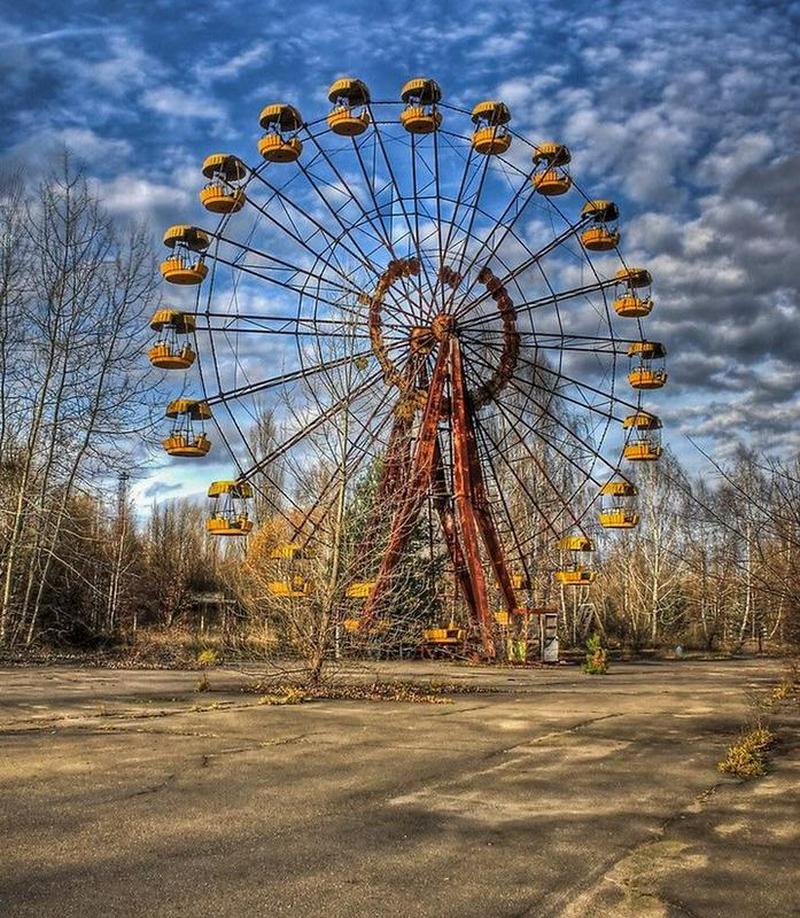
Pripyat Amusement Park remains frozen in time, an eerie reminder of the devastating events of April 26, 1986—the Chernobyl nuclear disaster. Originally scheduled to open on May 1, 1986, the park was intended to be a celebratory venue for International Workers' Day. However, the catastrophic explosion at the nearby Chernobyl Nuclear Power Plant forced the evacuation of Pripyat just days before the grand opening, leaving the amusement park untouched and eerily desolate.
The iconic Ferris wheel, bumper cars, and other attractions meant to bring joy to the citizens of Pripyat now stand as rusted relics, surrounded by the overgrown vegetation that has claimed the abandoned city. The eerie atmosphere is heightened by the ghostly silence that replaced the laughter and excitement intended for the park. While some people have claimed that the park opened for a few hours as an attempt to distract Ukrainians from the ongoing chaos of the nuclear power plant explosion, these claims have never been verified by any reputable source.
Gone Under, Down Under: Atlantis Marine Park
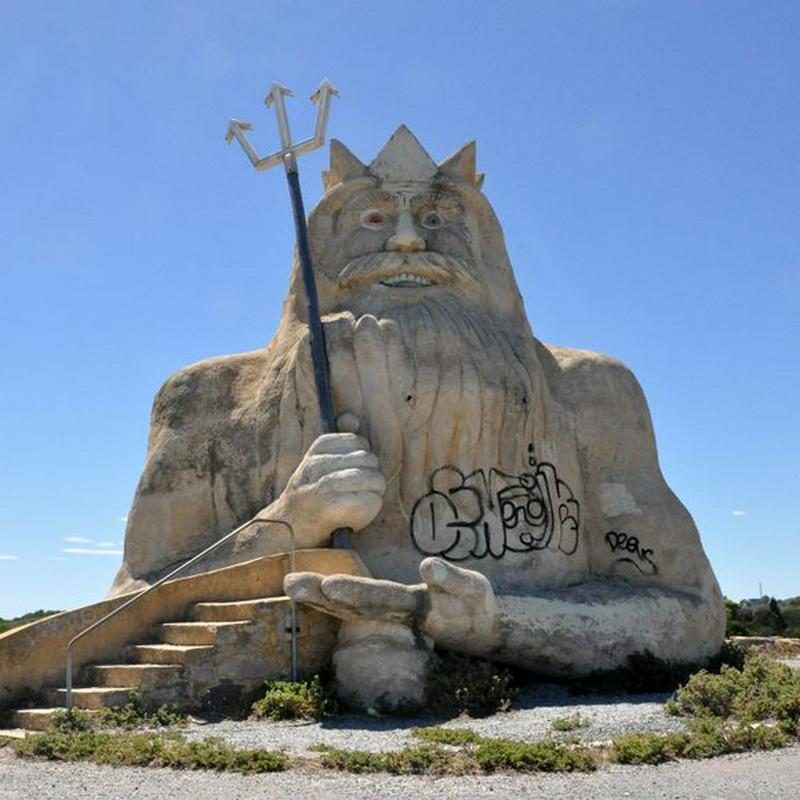
Perched along the shores of the Indian Ocean in Two Rocks, Western Australia, Atlantis Marine Park was a marine-themed amusement park that captured the imagination of visitors for a brief but magical period. Opening its gates in 1981, the park was designed to be a marine paradise, complete with captivating dolphin shows, vibrant underwater displays, and a distinctive ancient Greek theme. The centerpiece of the park was a colossal statue of King Neptune, welcoming guests to a world where marine wonders and myth converged.
Despite its initial popularity, the park struggled to maintain its momentum. In 1990, the park closed its doors, leaving behind a surreal landscape.
Six Flags Stopped Flying Over New Orleans
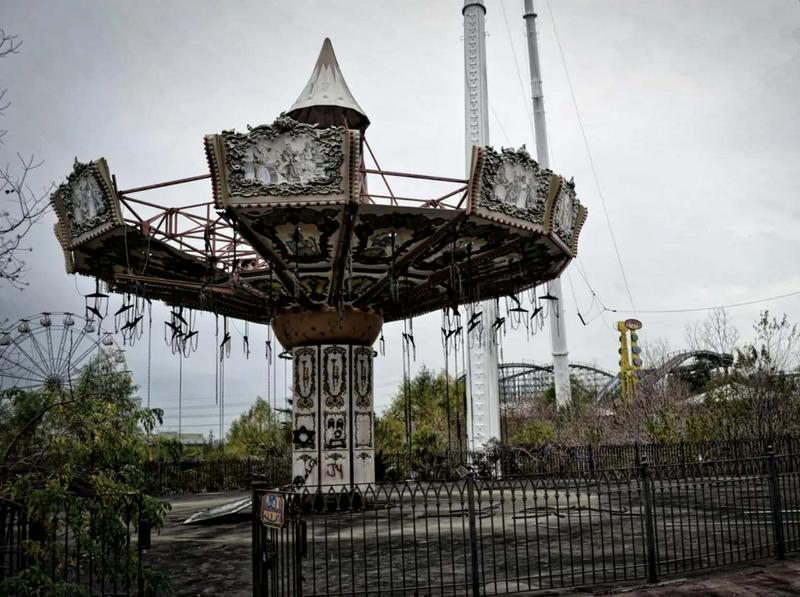
Nestled on the banks of the Mississippi River, Six Flags New Orleans was once a bustling hub of entertainment and excitement. Originally opened as Jazzland in 2000, the park underwent a transformative rebranding in 2003 when Six Flags, a prominent amusement park chain, took over. The new identity brought with it a promise of thrilling rides, family-friendly attractions, and a vibrant atmosphere that would make it a staple in the region's leisure landscape.
Tragically, this promise didn’t last long. Hurricane Katrina, the devastating storm that struck in 2005, wreaked havoc on the Gulf Coast and left Six Flags New Orleans in ruins. The park, situated in a vulnerable flood-prone area, faced insurmountable damage. Floodwaters submerged the grounds, submerging rides and structures and rendering them unusable. The magnitude of the destruction dealt a severe blow to the park's operations, prompting its closure in 2005. Despite efforts to revive it, the extensive damage proved too extensive, leading to the abandonment of Six Flags New Orleans.
Today, the abandoned park stands as a haunting reminder of the destructive forces of nature. While the skeletal frames of roller coasters and the faded hues of once-vibrant attractions remain, Six Flags New Orleans shows the fragility of man-made entertainment in the face of natural disasters.
Broken Dreams at Nara Dreamland
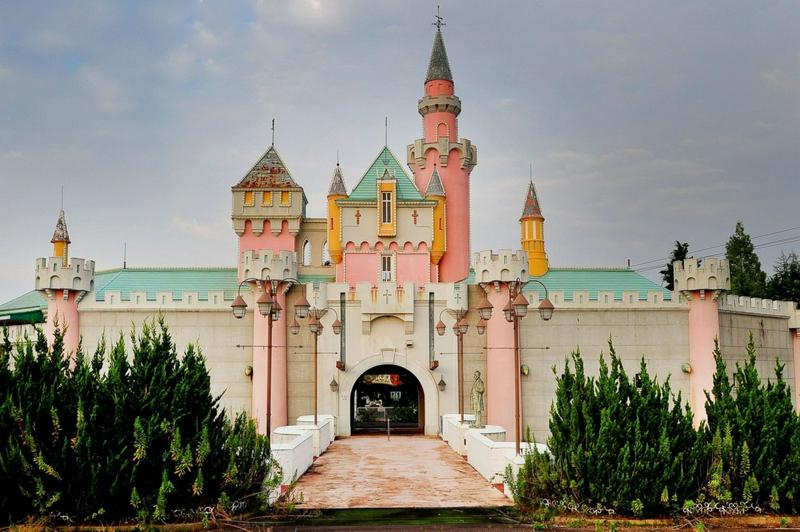
Nara Dreamland, located in the historical city of Nara, Japan, was once envisioned as a magical realm where dreams could come to life. Opening its gates in 1961, the amusement park was designed as a homage to Disneyland in California, featuring familiar attractions such as a Sleeping Beauty Castle replica and a Matterhorn-inspired roller coaster. Nara Dreamland was embraced by visitors seeking a taste of the enchantment that had captivated audiences on the other side of the world.
As time passed, the park faced a decline in attendance that created more revenue issues than park leadership could overcome. Changes in the theme park industry and the allure of more modern attractions in neighboring Osaka led to Nara Dreamland's closure in 2006.
Ho Thuy Tien: Where the Dragon’s Fire Went Out
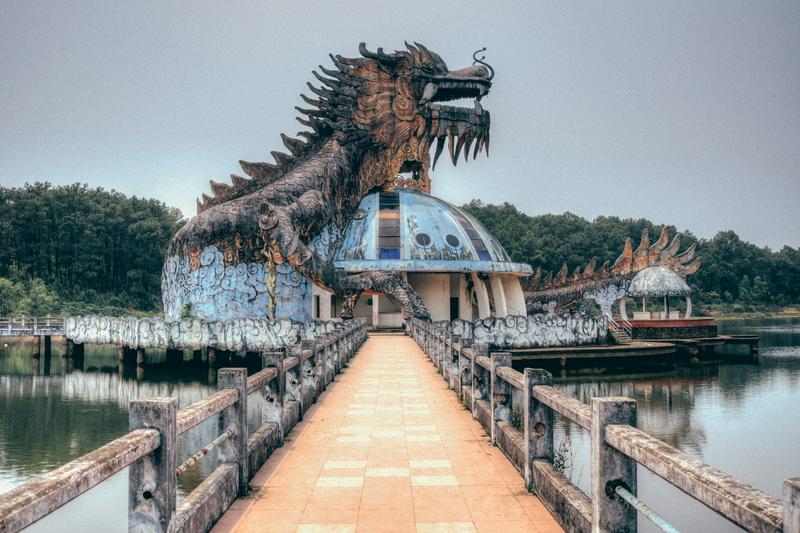
Ho Thuy Tien Water Park in Vietnam stands as a captivating yet eerie testament to the passage of time and the unpredictable nature of tourism ventures. Located near the ancient city of Hue, the water park opened its doors in the early 2000s with ambitious plans to attract visitors with its aquatic attractions. Its centerpiece was a colossal dragon-shaped structure, serving both as a water slide and a symbolic representation of Vietnamese mythology. Despite its initial popularity, financial troubles plagued Ho Thuy Tien Water Park, leading to its closure within a few years of operation.
Hungarian Heartbreak: A Local Favorite Shuts Its Doors
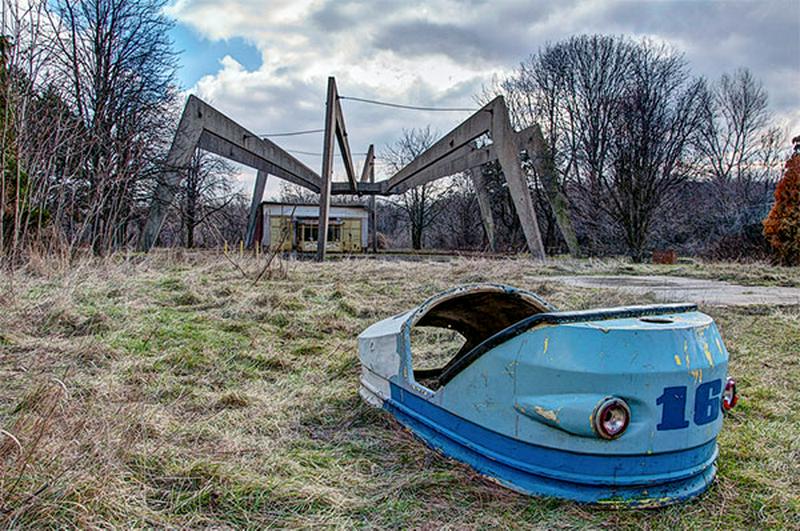
Dunaujvarosi Vidampark, located in Dunaujvaros, Hungary, holds a special place in the memories of locals and visitors as a historic amusement park that graced the city for several decades. Opened in 1952, the park quickly became a beloved destination, providing generations with a mix of classic rides, carnival games, and a lively atmosphere.
Despite its enduring popularity, Dunaujvarosi Vidampark faced challenges in the later years, including changing entertainment preferences and economic pressures. In 2015, Dunaujvarosi Vidampark closed its gates, marking the end of an era for this cherished space.
Holy Land USA: The Abandoned Christian Theme Park

Holy Land USA was an unconventional religious theme park that was perched on top of a mountain in Waterbury, CT. The park aimed to blend faith with entertainment. Established in the 1950s by John Baptist Greco, the park featured replicas of biblical scenes and landmarks, attracting visitors from near and far. The brainchild of Greco, Holy Land USA was born out of his deep religious convictions and desire to create a place for spiritual reflection and education.
As the years passed, Holy Land USA faced various challenges, including financial struggles and a decline in visitors. By the late 1980s, the park fell into a state of disrepair. Its closure in 1984 marked the end of an era for this unique destination.
In 2014, the park found itself back in the news when a local arts organization embarked on a restoration project to revive Holy Land USA. While efforts were made to clean up the site and restore some of its religious displays, the park remains largely abandoned.
River Country Bay Lake Florida: The End of Walt Disney’s First Water Park
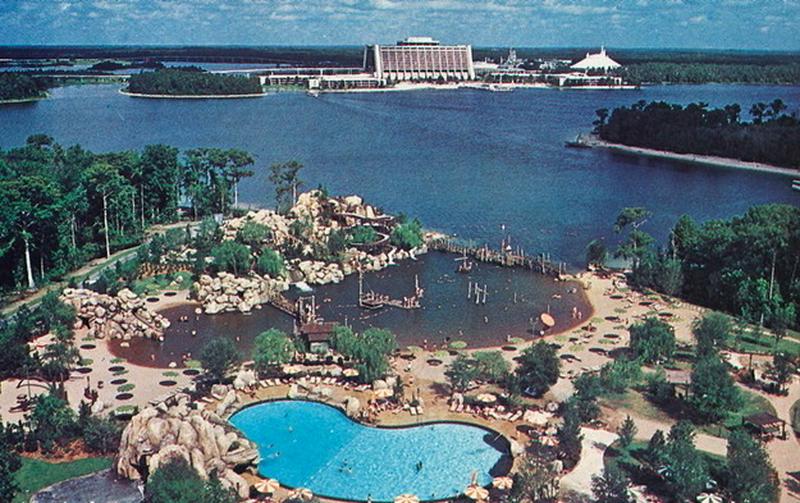
Situated on the shores of Bay Lake near Orlando, Florida, Disney's River Country holds the distinction of being the first-ever water park at Walt Disney World Resort. Opening its gates in 1976, River Country became a beloved destination for families seeking aquatic adventures and a respite from the Florida heat. In fact, it was the first water park in the state of Florida. With its unique water filtration system using water from Bay Lake, sandy beaches, and signature attractions like the Bay Cove and White Water Rapids, the park quickly established itself as a popular destination for water-loving visitors.
However, as the years passed, River Country faced several challenges, including changes in water park safety regulations and the opening of newer, more modern water attractions within the Walt Disney World Resort complex. In 2005, Disney announced the seasonal closure of River Country, and in 2007, it was officially closed with plans to make way for future developments.
The closure marked the end of an era for River Country, leaving behind memories of its iconic wave pool and the charming beachfront atmosphere. Despite its closure, River Country's legacy lives on, with its influence seen in subsequent Disney water parks. The site was eventually repurposed for new projects, contributing to the ever-evolving landscape of the Walt Disney World Resort.
Dadipark: The Oldest Amusement Park in Belgium

Located in Dadizele, Belgium, Dadipark was once a cherished destination for families seeking joy and amusement. Opening its gates in 1950, the park initially featured a serene lake, lush greenery, and a collection of charming rides that catered to visitors of all ages. Over the years, Dadipark evolved, adding new attractions and becoming a beloved fixture in the region.
However, as the turn of the millennium approached, Dadipark faced numerous challenges. Safety concerns, coupled with financial difficulties, prompted the park's closure in 2002.
Abandoned in Arkansas: Dogpatch USA

In its heyday, Dogpatch USA thrived as a unique destination, drawing visitors with its quirky charm and family-friendly atmosphere. However, as the popularity of the "Li'l Abner" comic strip waned, and the theme park industry evolved, Dogpatch USA faced financial challenges. The park underwent ownership changes and struggled to adapt to the shifting dynamics of the amusement industry.
In 1993, Dogpatch USA closed its gates, leaving behind a nostalgic legacy and a surreal landscape frozen in time. Bass Pro Shop CEO Johnny Morris purchased the property in 2020 for approximately $1.1 million. In the fall of 2023, it was announced that the property that was once home to Dogpatch USA would be redeveloped. However, it doesn’t look like the land will be home to a theme park ever again. Instead, The Marble Falls Sewer Improvement District stands to receive $1 million to build wastewater infrastructure improvements.
Cascade Park: The Former Amusement Park That’s Still Open - Just Don't Expect To Use Any Of The Rides
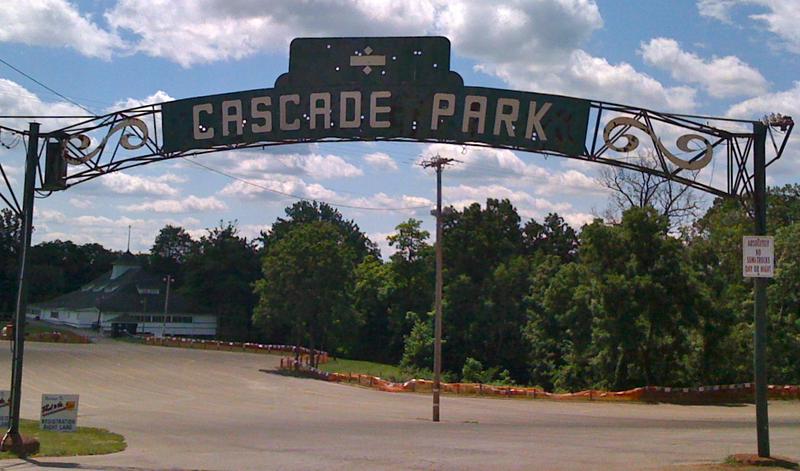 One of the oldest amusement parks in the world, Cascade Park was once a cherished retreat for locals and visitors alike. Opening its gates in 1897, the park quickly became a popular destination known for its natural beauty, scenic landscapes, and a signature waterfall that gave the park its name. With a rich history spanning over a century, Cascade Park was a hub of community gatherings, offering a delightful escape into nature with its wooded trails, charming picnic areas, and enchanting amusement rides.
One of the oldest amusement parks in the world, Cascade Park was once a cherished retreat for locals and visitors alike. Opening its gates in 1897, the park quickly became a popular destination known for its natural beauty, scenic landscapes, and a signature waterfall that gave the park its name. With a rich history spanning over a century, Cascade Park was a hub of community gatherings, offering a delightful escape into nature with its wooded trails, charming picnic areas, and enchanting amusement rides.The park's iconic wooden roller coaster, "The Jack Rabbit," added an element of thrill to Cascade Park and became a landmark attraction for generations. However, as the decades passed, changing trends in entertainment and the economic challenges faced by traditional amusement parks took their toll. Cascade Park experienced a decline in attendance, and in 1989, the park closed its gates for the last time, marking the end of an era for this once-vibrant retreat.
In addition to its age, there is another factor that makes Cascade Park one of the most unique parks on our list. It’s among the only parks that’s still open. While the rides have not been in operation for many years, the park is still open for explorers who want to get an up-close look at days gone by. It’s a popular destination for concerts, weddings, and other outdoor events.
The Failed Festival in Bali
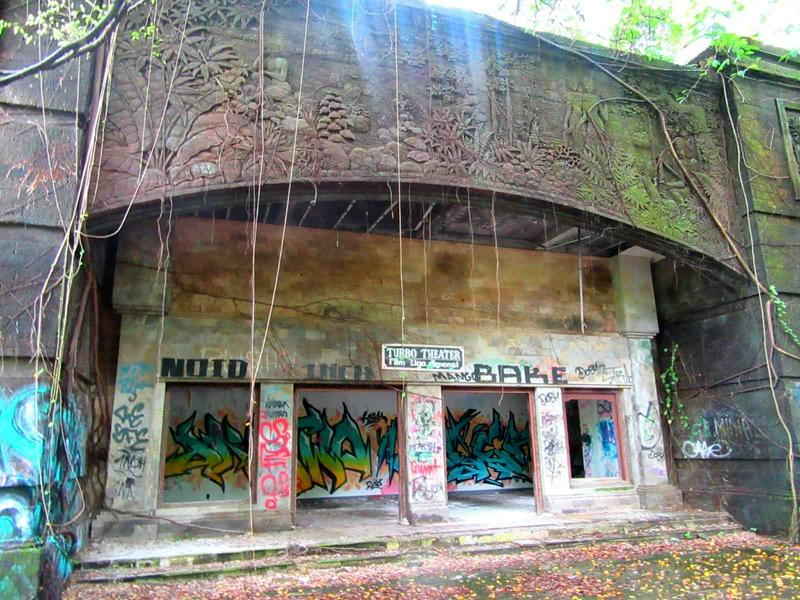
Taman Festival was envisioned as an amusement park that would blend traditional Indonesian culture with modern entertainment. Opening its gates in 1997, the park was set against the backdrop of lush tropical landscapes, offering a unique experience for both locals and tourists. Taman Festival boasted a variety of attractions, including cultural performances, water rides, and theatrical shows, making it a promising addition to Bali's vibrant tourist offerings.
However, Taman Festival faced a series of setbacks, including financial difficulties and permit issues. By the early 2000s, the park experienced a decline in attendance, leading to its closure in 2001. The once-lively grounds of Taman Festival fell silent, and the vibrant hues of its structures began to fade. Attempts were made to revive the park in the following years, but they proved unsuccessful, and Taman Festival was left abandoned, surrounded by the enchanting landscapes of Bali.
Rocky Point Park: Summer Fun That Faded Away
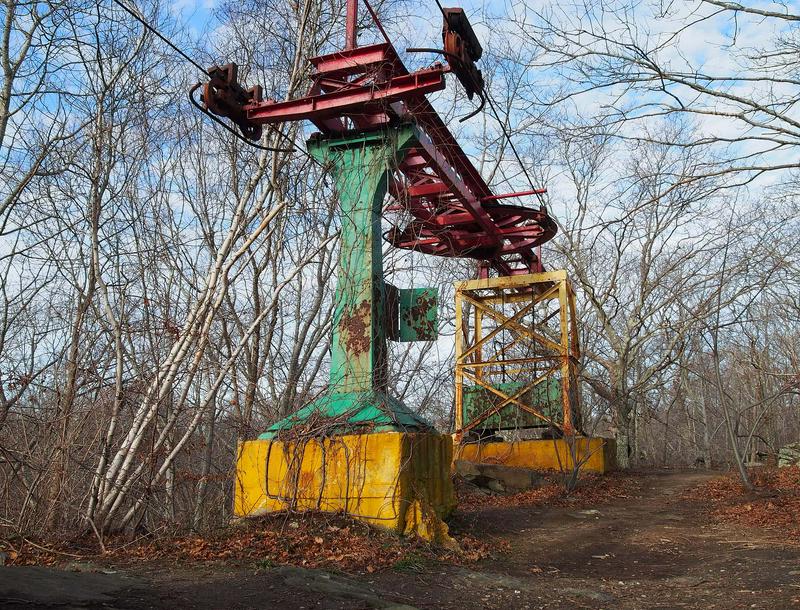
Along the coastline of Warwick, Rhode Island, Rocky Point Park held a special place in the hearts of locals and visitors for over a century. Opening its gates in the late 19th century, the park quickly became a beloved seaside destination, offering a perfect blend of oceanfront charm and classic amusement park attractions. With panoramic views of Narragansett Bay and a collection of rides ranging from the iconic Shore Dinner Hall to the thrilling Corkscrew roller coaster, Rocky Point Park stood as a symbol of summer fun and coastal nostalgia.
As the decades passed, Rocky Point Park faced the challenges common to many traditional amusement parks, including changing entertainment trends and economic pressures. Despite its enduring popularity, the park closed its gates in 1995, marking the end of an era for this iconic Rhode Island landmark.
Lost in the Grove: Williams Grove Amusement Park
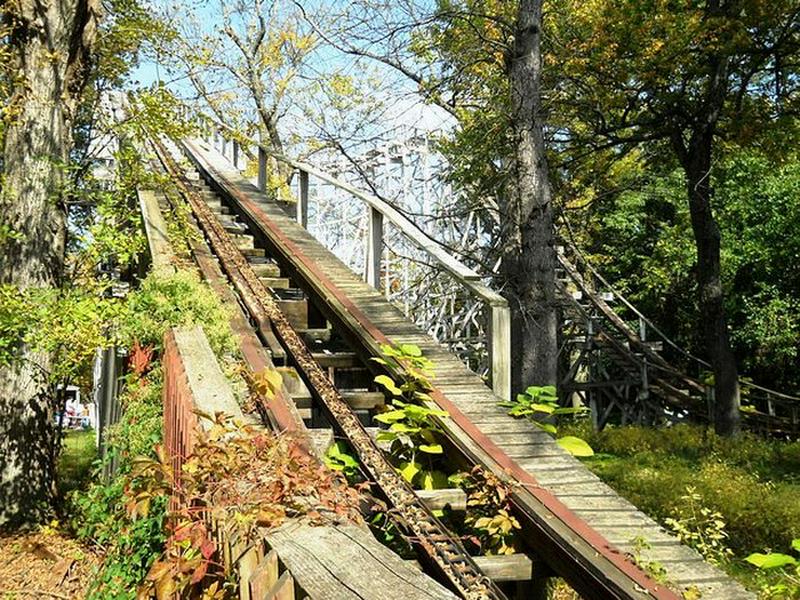
Located in Mechanicsburg, Pennsylvania, Williams Grove Amusement Park holds a storied history dating back to the late 19th century. Opening its gates in 1850, the park started as a picnic area and later evolved into a thriving amusement park, offering a blend of classic rides, entertainment, and community gatherings. Its iconic wooden roller coaster, the Cyclone, became a symbol of the park and a favorite among thrill-seekers.
Changing entertainment trends and economic pressures led to the park's closure in 2005. Today, the remnants of the Cyclone and other structures, although weathered by time, stand as nostalgic reminders of glory days. In recent years, there have been preservation efforts to safeguard elements of the park's history, ensuring that the legacy of Williams Grove Amusement Park endures as part of Pennsylvania's rich heritage.
A Closed Park in America’s Heartland
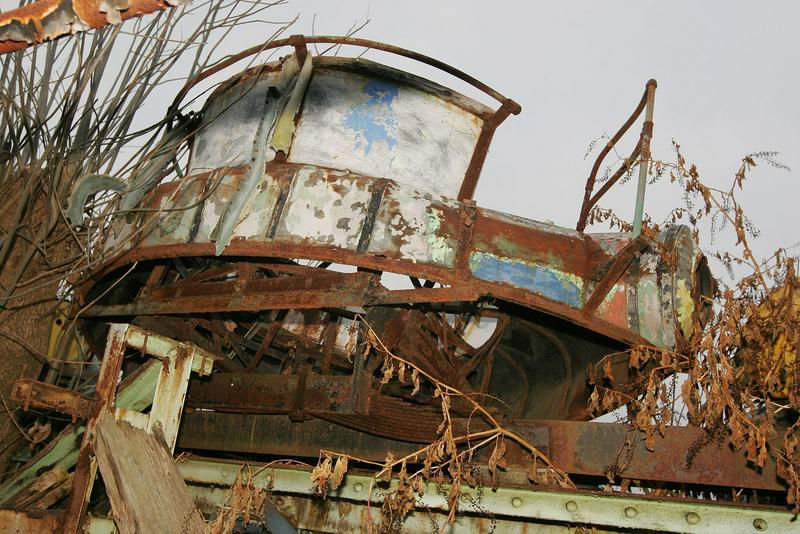
Chippewa Lake Park was once a cherished summer haven for families seeking relaxation and entertainment. Opening its gates in 1878, the park evolved from a tranquil lakeside retreat to a bustling amusement park featuring a scenic lake, iconic wooden roller coasters, and an array of attractions. Chippewa Lake Park stood as a symbol of summer joy, drawing generations of visitors to its picturesque shores. While the park was rebranded multiple times, it closed in 1978 after a century of operation.
Boblo Island: Nearly 100 Years of Memories
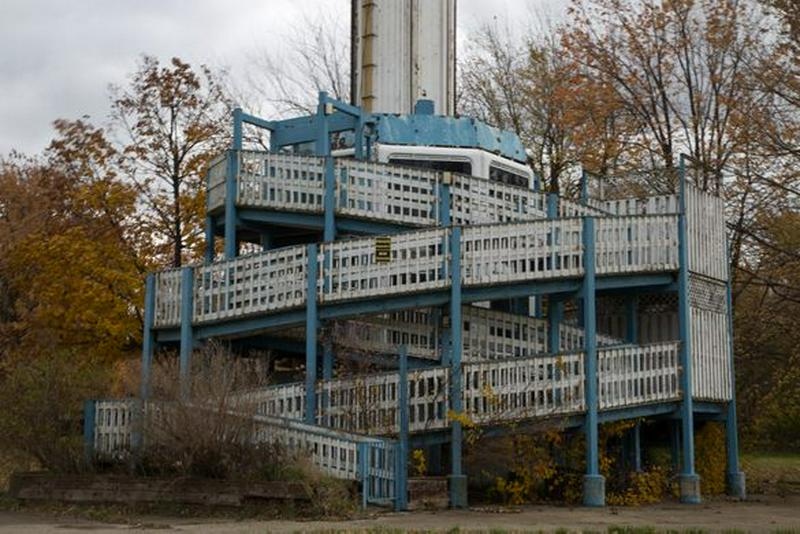
Boblo Island Amusement Park was a beloved escape for generations of Ontarians and Michiganders. Opening its gates in 1898, the park welcomed visitors with ferry rides, charming attractions, and the iconic Boblo Island Steamer. The island's charming ambiance and signature rides, including the classic carousel and the thrilling Sky Streak roller coaster, made it a cherished summer destination. In 1993, Boblo Island Amusement Park closed its doors for the last time.
Lincoln Park: Where the Comet Burned Out

Lincoln Park in North Dartmouth, Massachusetts was initially opened by Union Street Railway Company in 1894. The initial purpose of the park was to create a connection between Fall River and New Bedford. Initially, the park was made up of picnic tables, a playground, and some outdoor stoves. It wasn’t until the 1920s that it shifted into an amusement park.
In 1941, John Collins & Associates purchased Lincoln Park for $40,000. After the purchase, the new owners invested an additional $150,000 to install a bowling alley and update the on-site dance hall. Everything was going fine for Lincoln Park until the 1980s. Lincoln Park was already being overshadowed by newer, more modern amusement parks. Tragically, there was a fatal accident on the park’s signature rollercoaster, The Comet, that caused people to question the park’s safety. After another influx of cash was poured into the park, the turnstiles stopped spinning for the last time in 1987.
Very little is left of the park today, as a large portion of the property has been repurposed as a residential housing development. Many of the buildings and rides were vandalized and burnt over the years. The Comet was torn down, and its wood was used to build furniture.
A Dried-Up Waterpark in the Mojave Desert
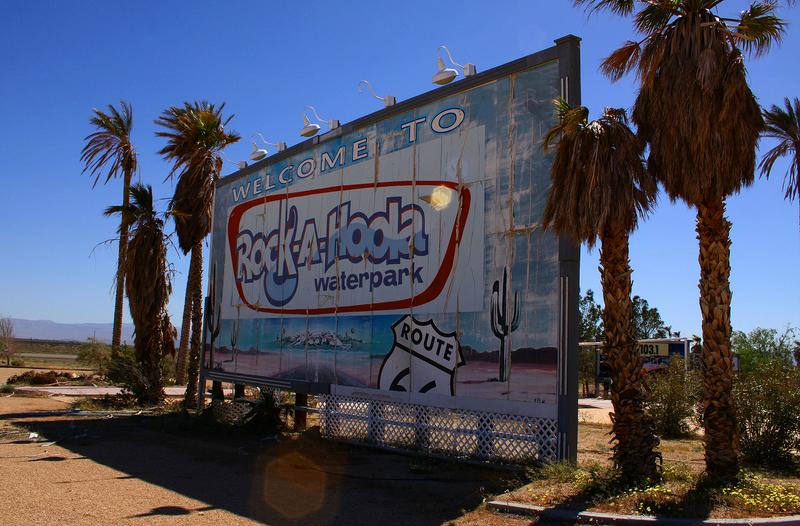
Lake Dolores Waterpark, also known as Rock-A-Hoola Waterpark, was once a popular oasis in the Mojave Desert, California, drawing crowds with its refreshing waters and thrilling attractions. Opening its doors in the 1960s, the waterpark became an iconic destination, featuring a variety of slides, pools, and a lazy river set against the arid backdrop of the desert. The park's signature feature was the massive Lake Dolores, providing visitors with a unique aquatic experience amid the desert landscape.
Evolving trends in the waterpark industry led to the closure of Lake Dolores Waterpark in the early 2000s. Despite various attempts to revive the park under the name Rock-A-Hoola Waterpark in the mid-2000s, these efforts proved unsuccessful.
Dinosaur World: The Amusement Park That Went Extinct

Decades before the Jurassic Park movies caused a new generation of children to become obsessed with dinosaurs, Farwell’s Dinosaur Park opened in Beaver, Arkansas for the first time in 1967. The park was initially launched when a man named Emmett Sullivan was hired to build somewhere between six and 10 dinosaur structures, one of which remained a landmark at the entrance of the park. In the late 1970s, the park was sold and rebranded as John Agar’s Land of Kong. This change in ownership brought about the construction of a 40-foot statue of King Kong, which was the largest replica in the world at the time. The park underwent its final rebranding in the 1980s, becoming Dinosaur World.
By the early 2000s, the park had a lot of things working against it. First, Beaver, Arkansas isn’t close to any major areas in the southeast. Location issues, combined with a change in the amusement park industry, left Dinosaur World on the verge of extinction. There simply wasn’t any way to keep the park operating, and it closed for the last time in 2005
No comments: